Jiayi Xu
Synchro-Thermography: Monitoring ~10 mK Facial Temperature Changes with Heartbeat Referencing for Physiological Sensing
Jun 05, 2025Abstract:Infrared thermography has gained interest as a tool for non-contact measurement of blood circulation and skin blood flow due to cardiac activity. Partiularly, blood vessels on the surface, such as on the back of the hand, are suited for visualization. However, standardized methodologies have not yet been established for areas such as the face and neck, where many blood vessels are lie deeper beneath the surface, and external stimulation for measurement could be harmful. Here we propose Synchro-Thermography for stable monitoring of facial temperature changes associated with heart rate variability. We conducted experiments with eight subjects and measured minute temperature changes with an amplitude of about \SI{10}{mK} on the forehead and chin. The proposed method improves the temperature resolution by a factor of 2 or more, and can stably measure skin temperature changes caused by blood flow. This skin temperature change could be applied to physiological sensing such as blood flow changes due to injury or disease, or as an indicator of stress.
Deformable Registration Framework for Augmented Reality-based Surgical Guidance in Head and Neck Tumor Resection
Mar 11, 2025Abstract:Head and neck squamous cell carcinoma (HNSCC) has one of the highest rates of recurrence cases among solid malignancies. Recurrence rates can be reduced by improving positive margins localization. Frozen section analysis (FSA) of resected specimens is the gold standard for intraoperative margin assessment. However, because of the complex 3D anatomy and the significant shrinkage of resected specimens, accurate margin relocation from specimen back onto the resection site based on FSA results remains challenging. We propose a novel deformable registration framework that uses both the pre-resection upper surface and the post-resection site of the specimen to incorporate thickness information into the registration process. The proposed method significantly improves target registration error (TRE), demonstrating enhanced adaptability to thicker specimens. In tongue specimens, the proposed framework improved TRE by up to 33% as compared to prior deformable registration. Notably, tongue specimens exhibit complex 3D anatomies and hold the highest clinical significance compared to other head and neck specimens from the buccal and skin. We analyzed distinct deformation behaviors in different specimens, highlighting the need for tailored deformation strategies. To further aid intraoperative visualization, we also integrated this framework with an augmented reality-based auto-alignment system. The combined system can accurately and automatically overlay the deformed 3D specimen mesh with positive margin annotation onto the resection site. With a pilot study of the AR guided framework involving two surgeons, the integrated system improved the surgeons' average target relocation error from 9.8 cm to 4.8 cm.
Weaver: Foundation Models for Creative Writing
Jan 30, 2024

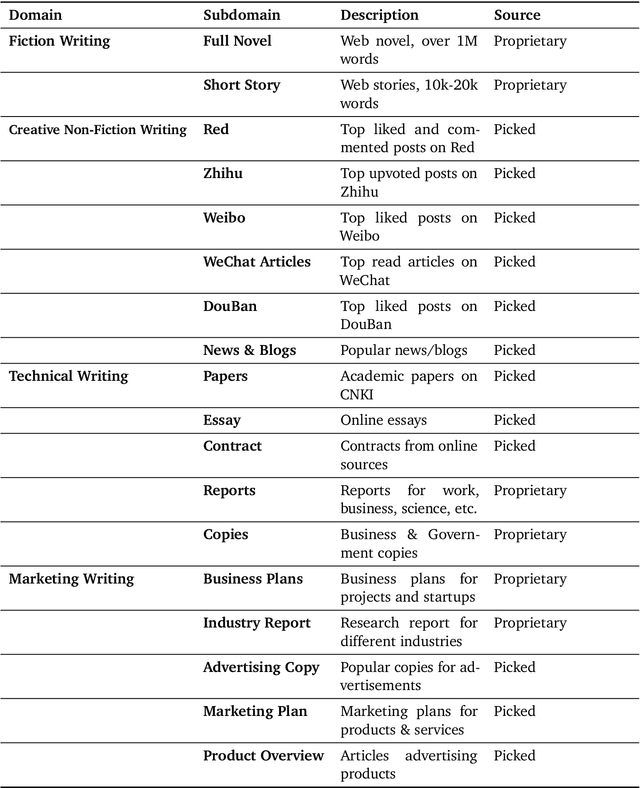

Abstract:This work introduces Weaver, our first family of large language models (LLMs) dedicated to content creation. Weaver is pre-trained on a carefully selected corpus that focuses on improving the writing capabilities of large language models. We then fine-tune Weaver for creative and professional writing purposes and align it to the preference of professional writers using a suit of novel methods for instruction data synthesis and LLM alignment, making it able to produce more human-like texts and follow more diverse instructions for content creation. The Weaver family consists of models of Weaver Mini (1.8B), Weaver Base (6B), Weaver Pro (14B), and Weaver Ultra (34B) sizes, suitable for different applications and can be dynamically dispatched by a routing agent according to query complexity to balance response quality and computation cost. Evaluation on a carefully curated benchmark for assessing the writing capabilities of LLMs shows Weaver models of all sizes outperform generalist LLMs several times larger than them. Notably, our most-capable Weaver Ultra model surpasses GPT-4, a state-of-the-art generalist LLM, on various writing scenarios, demonstrating the advantage of training specialized LLMs for writing purposes. Moreover, Weaver natively supports retrieval-augmented generation (RAG) and function calling (tool usage). We present various use cases of these abilities for improving AI-assisted writing systems, including integration of external knowledge bases, tools, or APIs, and providing personalized writing assistance. Furthermore, we discuss and summarize a guideline and best practices for pre-training and fine-tuning domain-specific LLMs.
VMap: An Interactive Rectangular Space-filling Visualization for Map-like Vertex-centric Graph Exploration
May 31, 2023



Abstract:We present VMap, a map-like rectangular space-filling visualization, to perform vertex-centric graph exploration. Existing visualizations have limited support for quality optimization among rectangular aspect ratios, vertex-edge intersection, and data encoding accuracy. To tackle this problem, VMap integrates three novel components: (1) a desired-aspect-ratio (DAR) rectangular partitioning algorithm, (2) a two-stage rectangle adjustment algorithm, and (3) a simulated annealing based heuristic optimizer. First, to generate a rectangular space-filling layout of an input graph, we subdivide the 2D embedding of the graph into rectangles with optimization of rectangles' aspect ratios toward a desired aspect ratio. Second, to route graph edges between rectangles without vertex-edge occlusion, we devise a two-stage algorithm to adjust a rectangular layout to insert border space between rectangles. Third, to produce and arrange rectangles by considering multiple visual criteria, we design a simulated annealing based heuristic optimization to adjust vertices' 2D embedding to support trade-offs among aspect ratio quality and the encoding accuracy of vertices' weights and adjacency. We evaluated the effectiveness of VMap on both synthetic and application datasets. The resulting rectangular layout has better aspect ratio quality on synthetic data compared with the existing method for the rectangular partitioning of 2D points. On three real-world datasets, VMap achieved better encoding accuracy and attained faster generation speed compared with existing methods on graphs' rectangular layout generation. We further illustrate the usefulness of VMap for vertex-centric graph exploration through three case studies on visualizing social networks, representing academic communities, and displaying geographic information.
IDLat: An Importance-Driven Latent Generation Method for Scientific Data
Aug 05, 2022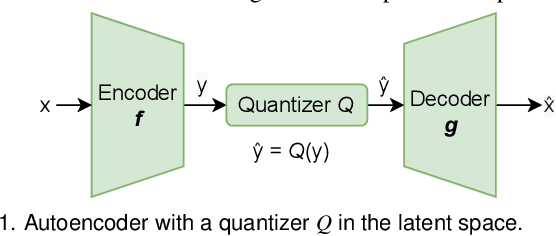
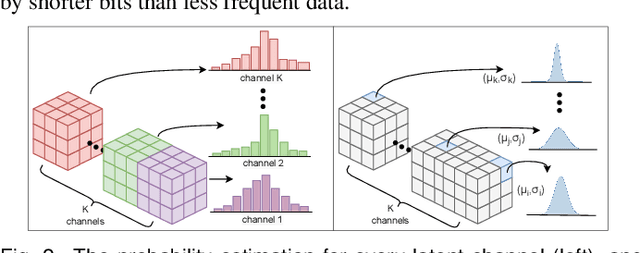
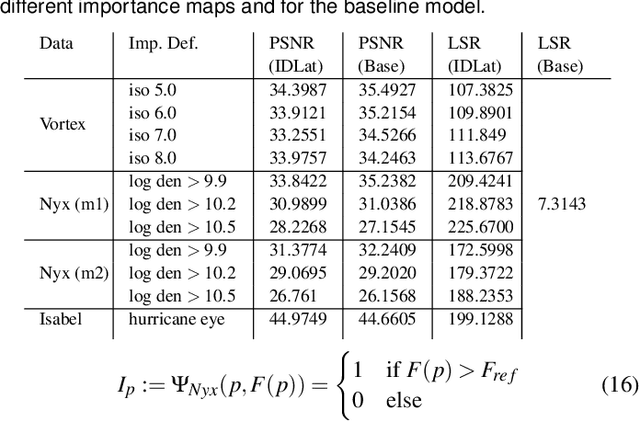
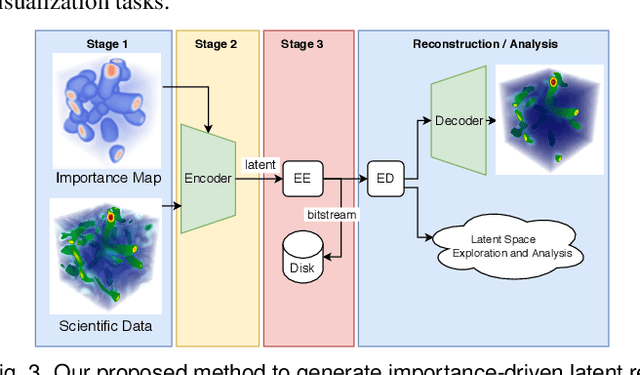
Abstract:Deep learning based latent representations have been widely used for numerous scientific visualization applications such as isosurface similarity analysis, volume rendering, flow field synthesis, and data reduction, just to name a few. However, existing latent representations are mostly generated from raw data in an unsupervised manner, which makes it difficult to incorporate domain interest to control the size of the latent representations and the quality of the reconstructed data. In this paper, we present a novel importance-driven latent representation to facilitate domain-interest-guided scientific data visualization and analysis. We utilize spatial importance maps to represent various scientific interests and take them as the input to a feature transformation network to guide latent generation. We further reduced the latent size by a lossless entropy encoding algorithm trained together with the autoencoder, improving the storage and memory efficiency. We qualitatively and quantitatively evaluate the effectiveness and efficiency of latent representations generated by our method with data from multiple scientific visualization applications.
VDL-Surrogate: A View-Dependent Latent-based Model for Parameter Space Exploration of Ensemble Simulations
Jul 29, 2022
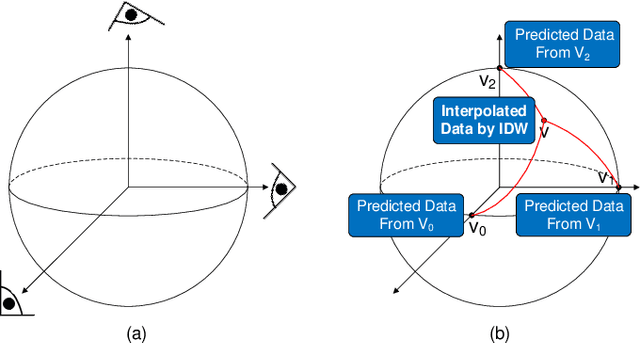
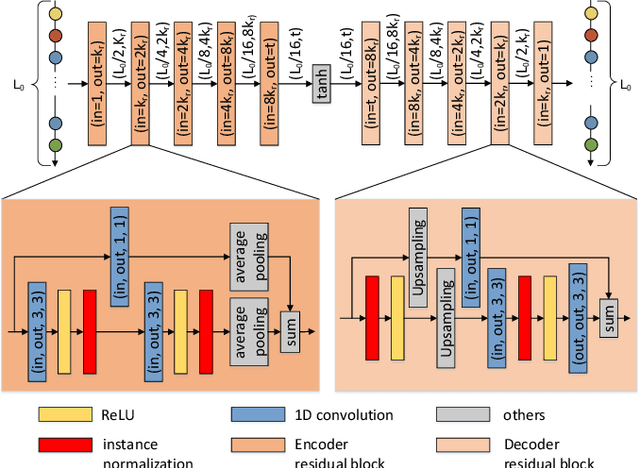

Abstract:We propose VDL-Surrogate, a view-dependent neural-network-latent-based surrogate model for parameter space exploration of ensemble simulations that allows high-resolution visualizations and user-specified visual mappings. Surrogate-enabled parameter space exploration allows domain scientists to preview simulation results without having to run a large number of computationally costly simulations. Limited by computational resources, however, existing surrogate models may not produce previews with sufficient resolution for visualization and analysis. To improve the efficient use of computational resources and support high-resolution exploration, we perform ray casting from different viewpoints to collect samples and produce compact latent representations. This latent encoding process reduces the cost of surrogate model training while maintaining the output quality. In the model training stage, we select viewpoints to cover the whole viewing sphere and train corresponding VDL-Surrogate models for the selected viewpoints. In the model inference stage, we predict the latent representations at previously selected viewpoints and decode the latent representations to data space. For any given viewpoint, we make interpolations over decoded data at selected viewpoints and generate visualizations with user-specified visual mappings. We show the effectiveness and efficiency of VDL-Surrogate in cosmological and ocean simulations with quantitative and qualitative evaluations. Source code is publicly available at https://github.com/trainsn/VDL-Surrogate.
GNN-Surrogate: A Hierarchical and Adaptive Graph Neural Network for Parameter Space Exploration of Unstructured-Mesh Ocean Simulations
Feb 21, 2022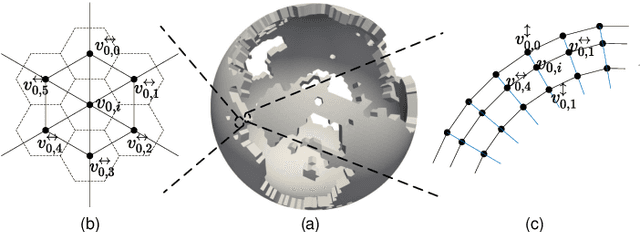

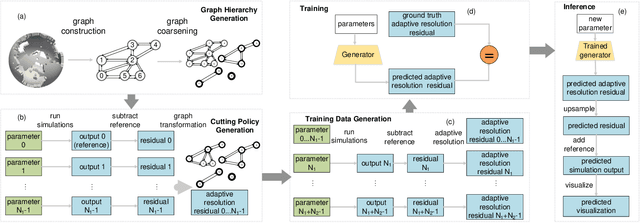

Abstract:We propose GNN-Surrogate, a graph neural network-based surrogate model to explore the parameter space of ocean climate simulations. Parameter space exploration is important for domain scientists to understand the influence of input parameters (e.g., wind stress) on the simulation output (e.g., temperature). The exploration requires scientists to exhaust the complicated parameter space by running a batch of computationally expensive simulations. Our approach improves the efficiency of parameter space exploration with a surrogate model that predicts the simulation outputs accurately and efficiently. Specifically, GNN-Surrogate predicts the output field with given simulation parameters so scientists can explore the simulation parameter space with visualizations from user-specified visual mappings. Moreover, our graph-based techniques are designed for unstructured meshes, making the exploration of simulation outputs on irregular grids efficient. For efficient training, we generate hierarchical graphs and use adaptive resolutions. We give quantitative and qualitative evaluations on the MPAS-Ocean simulation to demonstrate the effectiveness and efficiency of GNN-Surrogate. Source code is publicly available at https://github.com/trainsn/GNN-Surrogate.
Reinforcement Learning for Load-balanced Parallel Particle Tracing
Sep 13, 2021



Abstract:We explore an online learning reinforcement learning (RL) paradigm for optimizing parallel particle tracing performance in distributed-memory systems. Our method combines three novel components: (1) a workload donation model, (2) a high-order workload estimation model, and (3) a communication cost model, to optimize the performance of data-parallel particle tracing dynamically. First, we design an RL-based workload donation model. Our workload donation model monitors the workload of processes and creates RL agents to donate particles and data blocks from high-workload processes to low-workload processes to minimize the execution time. The agents learn the donation strategy on-the-fly based on reward and cost functions. The reward and cost functions are designed to consider the processes' workload change and the data transfer cost for every donation action. Second, we propose an online workload estimation model, in order to help our RL model estimate the workload distribution of processes in future computations. Third, we design the communication cost model that considers both block and particle data exchange costs, helping the agents make effective decisions with minimized communication cost. We demonstrate that our algorithm adapts to different flow behaviors in large-scale fluid dynamics, ocean, and weather simulation data. Our algorithm improves parallel particle tracing performance in terms of parallel efficiency, load balance, and costs of I/O and communication for evaluations up to 16,384 processors.
 Add to Chrome
Add to Chrome Add to Firefox
Add to Firefox Add to Edge
Add to Edge